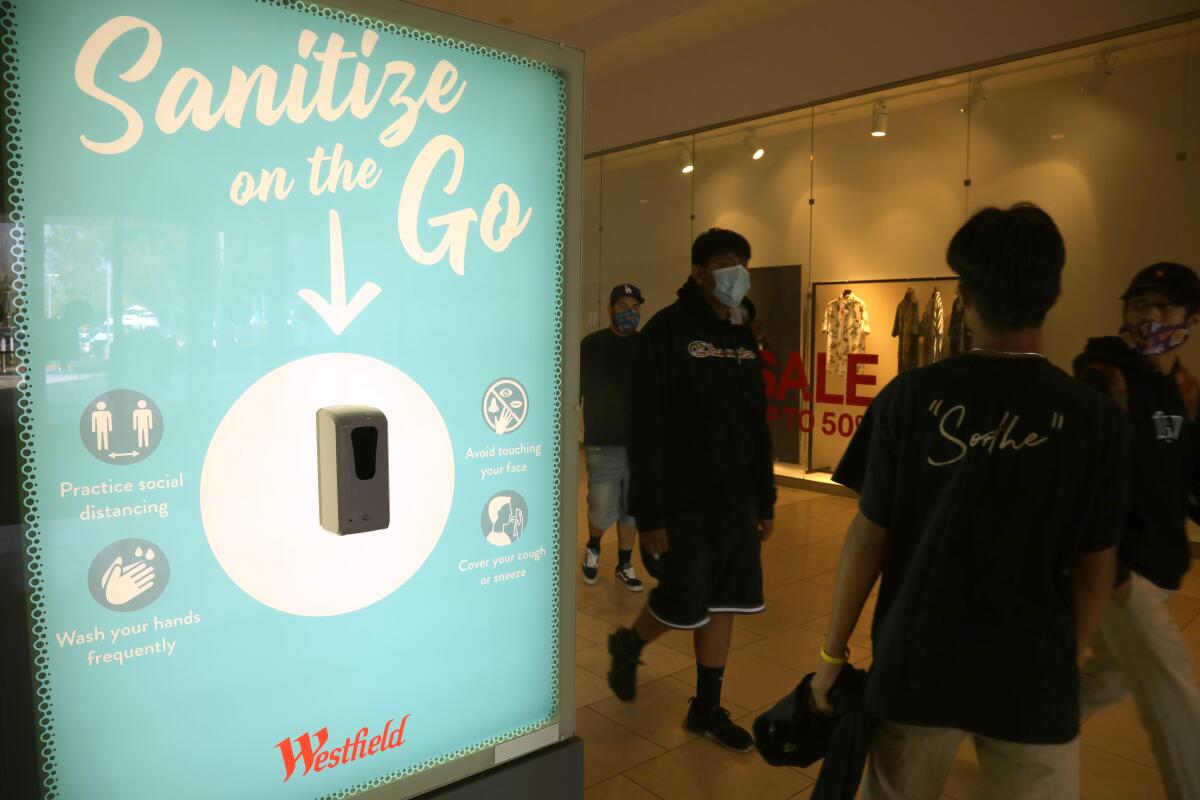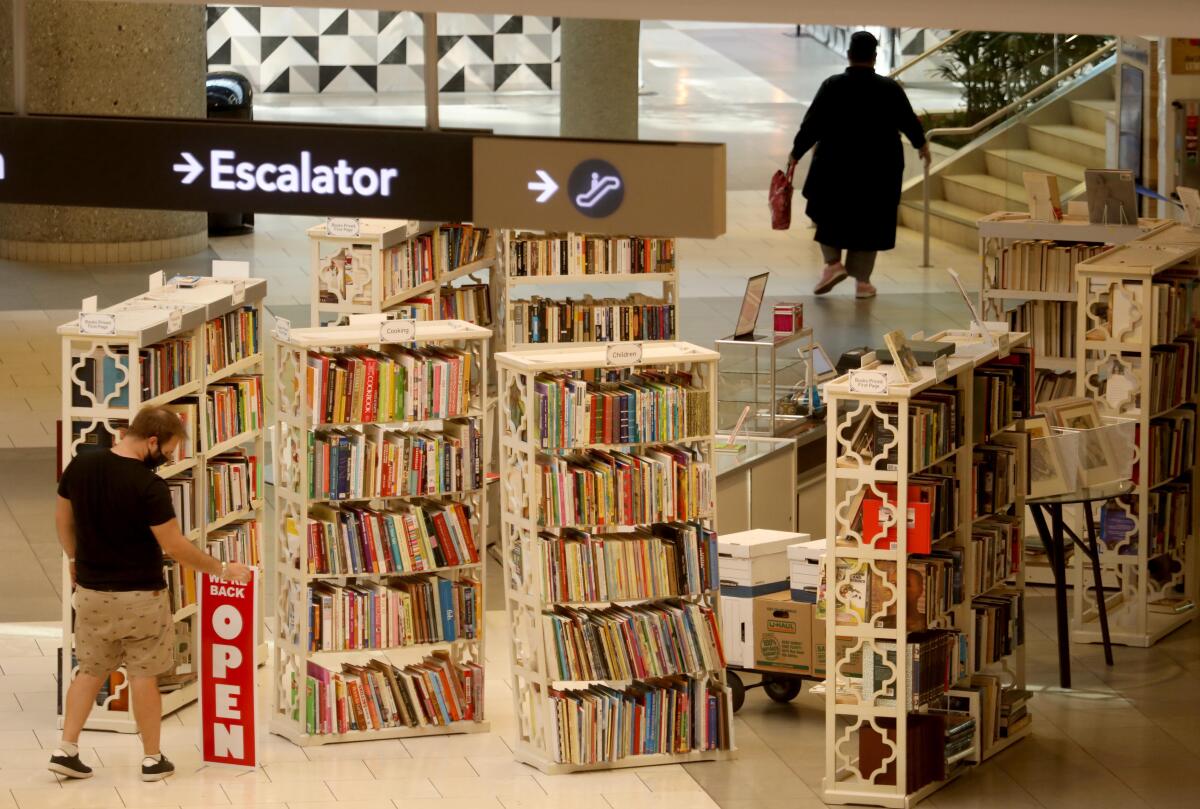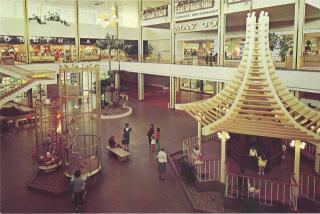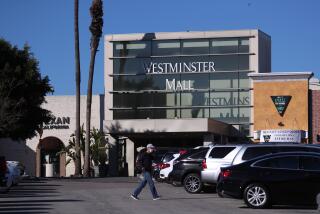As pandemic restrictions on indoor shopping ease, mall owners sue to stop another shutdown

Indoor shopping centers opened Wednesday as Los Angeles County officials eased pandemic-related restrictions on businesses, but one of the biggest mall operators in the region is suing to stop the county from shutting down centers again.
The owner of Westfield-branded malls, Unibail-Rodamco-Westfield, filed a proposed class action lawsuit against the county in late September that called for the county to lift prohibitions it called “unlawful and unjustifiable” in part because they are targeted at indoor centers, which were then mostly closed.
Although the county gave the green light to indoor mall stores operating with limits on the number of customers who can be inside, Westfield is suing in federal court to stop officials from repeatedly opening and closing stores to blunt the impact of the pandemic.
Gov. Gavin Newsom has likened such openings and closings of businesses to a dimmer switch that the state can raise or lower in relation to the transmission of COVID-19. When fewer new cases are diagnosed, restrictions on occupancy of stores, restaurants and other businesses will be loosened. If more people get sick, restrictions will retighten.

Los Angeles County has lagged behind other parts of California in reopening businesses because of its continued high numbers of new cases and deaths. But on Wednesday, “nonessential” stores in indoor shopping centers reopened with limited capacity for the first time since July.
Westfield and the owner of Del Amo Fashion Center, a regional indoor mall in Torrance, have both filed lawsuits intended to stop the county from effectively shutting down their shopping centers as a coronavirus prevention measure. Merchants including a sports apparel seller and a children’s clothing boutique operator have joined the lawsuits.
The county has not commented on the litigation, but its public information office said in a statement last month that the county “has been intensely committed to protecting the health and safety of its residents through an unprecedented crisis using science and data and responding in real time to a deadly and previously unknown virus that has tragically claimed thousands of lives and upended life for millions of people.”
County officials continue “to assess the data, the science and the state guidelines to safely guide the reopening” of local businesses, the statement said.
In an interview with The Times, Jean-Marie Tritant, president of U.S. operations for Paris-based Unibail-Rodamco-Westfield, discussed his company’s litigation and efforts to conduct business prudently during the pandemic. The interview has been edited for length and clarity.
Your company has been in discussions with state and local officials since the early days of the pandemic about how to operate safely in a dangerous time. What finally led to the lawsuit?
We have been working with the governor’s office on this dimmer switch approach. We cannot afford to shut down again, so we need to monitor the pandemic. At the same time public has concern with the ability to be able to get small businesses and retailers open and not have the economy going dark totally.
In a letter to the county Board of Supervisors last month, you accused the county of a lack of transparency about the data it used to decide that restrictions on indoor malls should be more strict than those on outdoor malls.
We tried to reach out to them and there is no feedback. What are the data that they used to reach this decision that indoor malls shouldn’t remain open? How can you manage a business and prepare to reopen if you don’t understand what is the data, what is the science, that is behind the decision? It’s the lack of response from the Board of Supervisors that pushes us to go for this litigation, which is kind of the ultimate measure that we didn’t want to do at the beginning.
We have really been involved in all of the discussions for the last six months, but the lack of response, the lack of priorities, the lack of transparency from the Board of Supervisors led us to that litigation.
So you were frustrated that competitors at outdoor malls could operate while your indoor stores were closed?
What makes the difference between an indoor mall and a large stand-alone box that has the right to open? What’s the difference with an indoor mall? We have the ability to monitor the flow of people, making sure that we can enforce the social distancing and the fact that people have to wear a mask.
Does it work to operate stores at 25% occupancy?
It’s in line with the guidance from the governor, which we are happy with. According to where we stand on the level of the pandemic and the number of cases this is definitely when we should be very cautious and I think that 25% is fine. You can operate, you can do business. I’m super happy with that decision by the Board of Supervisors. That’s the first big step. We find a way to do the minimum to serve the businesses.
The issue is that we want to know that there will be no decision to shut down again entire malls and small businesses contrary to the state’s guidance when you have one spike. With this dimmer switch approach it’s still not clear that the county will follow the guidance of the governor, which gives us the ability to not be like we were in July where we reopened and two weeks later we had to close again.
Was that hard on the merchants?
Think about these small businesses, these retailers. They had to furlough their people, hire back the people, have two weeks of operations and then furlough everyone again. Then they don’t know when they will be able to reopen and how to manage their businesses. We need to understand how we can monitor the pandemic and in the meantime have the ability to keep the businesses going on and not having them die for good. After six months of no operation, we are almost at that place where we go dark or we can survive.
This is why we are not withdrawing our litigation, because we need that certainty from the Board of Supervisors. We need to know that if there is one spike in one zip code that we will not have to shut down again. You cannot operate like that. We have 1,300 retailers in our malls in L.A. County and they need to know.
You’ve removed seating in your food courts and taken other measures to avoid gatherings of visitors. Safety measures such as occupancy standards are also evident. How are people approaching a trip to the mall now?
The customers are mission-driven. They know exactly what they want to buy. They come with a purpose. There is less hanging around.

More to Read
Inside the business of entertainment
The Wide Shot brings you news, analysis and insights on everything from streaming wars to production — and what it all means for the future.
You may occasionally receive promotional content from the Los Angeles Times.











